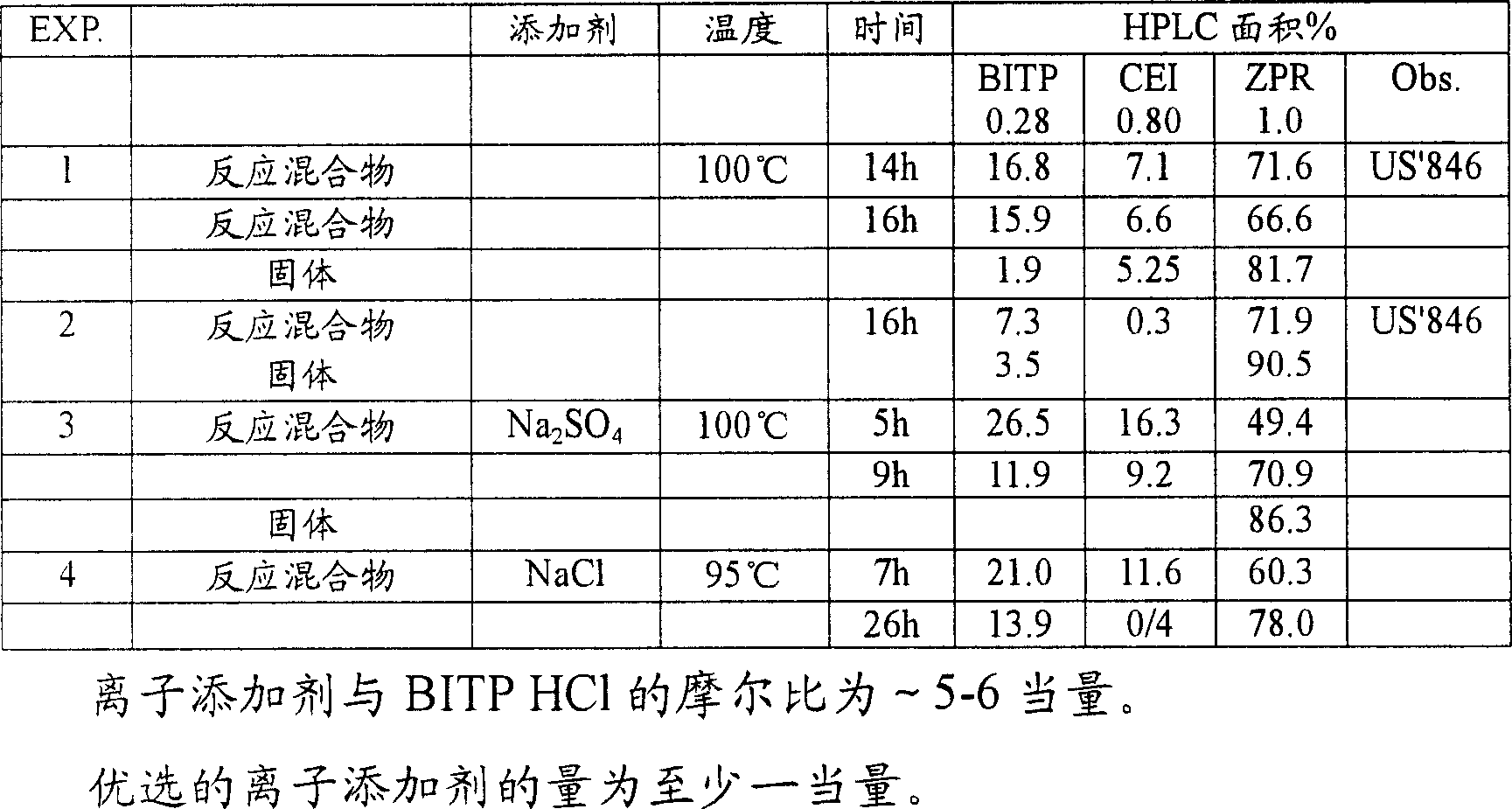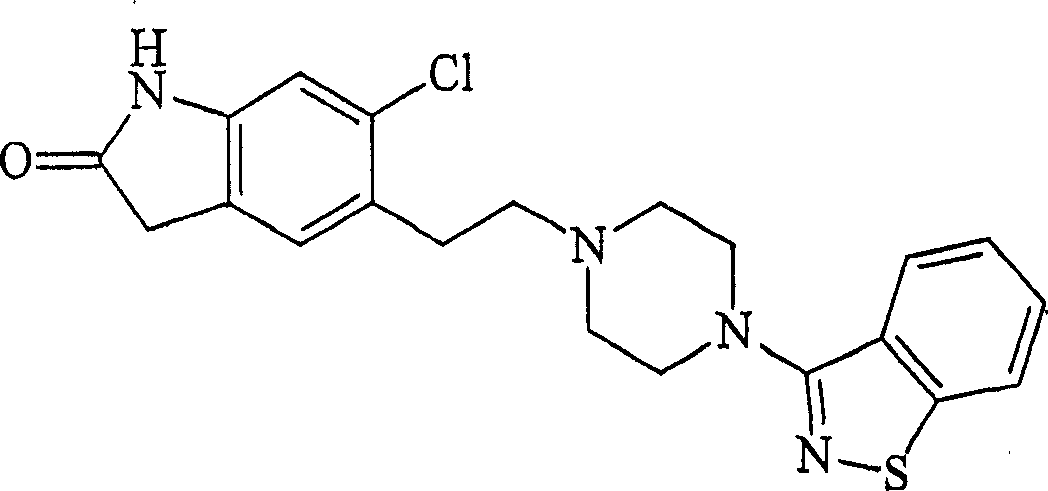Processes for preparation of ziprasidone
A technology of ziprasidone and reaction, which is applied in the field of preparation of ziprasidone, and can solve problems such as yield decline and no further reaction
- Summary
- Abstract
- Description
- Claims
- Application Information
AI Technical Summary
Problems solved by technology
Method used
Image
Examples
Embodiment
[0080] 1 Preparation of ZPR with 0.9 mol NaI in n-BuOH.
[0081] Add n-BuOH (50 ml) and 1,2-benzisothiazole-3-piperazinyl hydrochloride (BITP HCl) (5.6 g, 0.022 mol) into a three-necked flask, and heat the resulting slurry at 100°C. At 110°C, Na was added to the slurry 2 CO 3 (11.6g), NaI (3g) and 5-(2-chloroethyl)-6-chloro-1,3-dihydro-indol-2(2H)-one (CEI) (7.5g, 0.032mol) . Heating was continued for 8.5 hours. After the reaction was cooled, the product was filtered, washed with hexane and water, and dried at 60°C. The dried product weighed 8.12 g and had a HPLC purity of 92.7%.
[0082] 2. Preparation of ZPR in Glycerol
[0083] Add BITP HCl (25g, 0.098mol), glycerol (62ml), Na 2 CO 3 (13 g), the mixture was stirred for 10 minutes. CEI (5.9 g) was added to the reaction mixture, and the reaction mixture was heated at 115-120° C. for 3 hours. After 3 hours, the reaction was nearly complete; after cooling to room temperature, the solid was filtered off, triturated in ...
PUM
 Login to View More
Login to View More Abstract
Description
Claims
Application Information
 Login to View More
Login to View More - R&D
- Intellectual Property
- Life Sciences
- Materials
- Tech Scout
- Unparalleled Data Quality
- Higher Quality Content
- 60% Fewer Hallucinations
Browse by: Latest US Patents, China's latest patents, Technical Efficacy Thesaurus, Application Domain, Technology Topic, Popular Technical Reports.
© 2025 PatSnap. All rights reserved.Legal|Privacy policy|Modern Slavery Act Transparency Statement|Sitemap|About US| Contact US: help@patsnap.com


